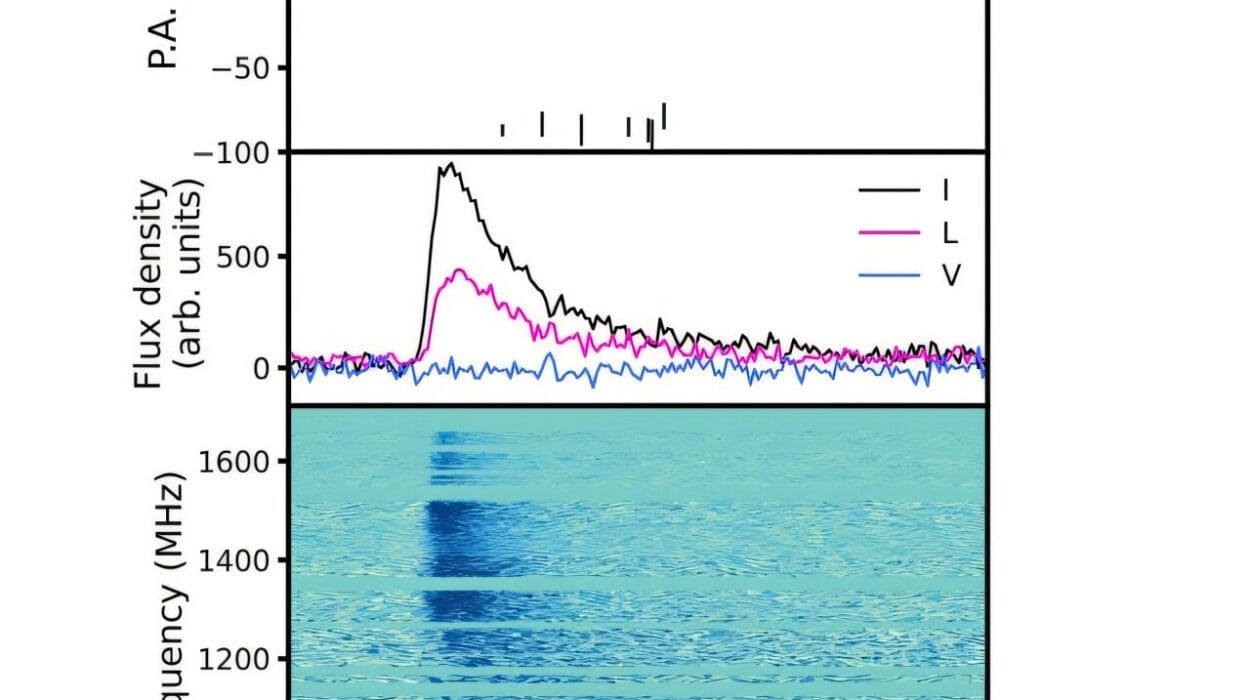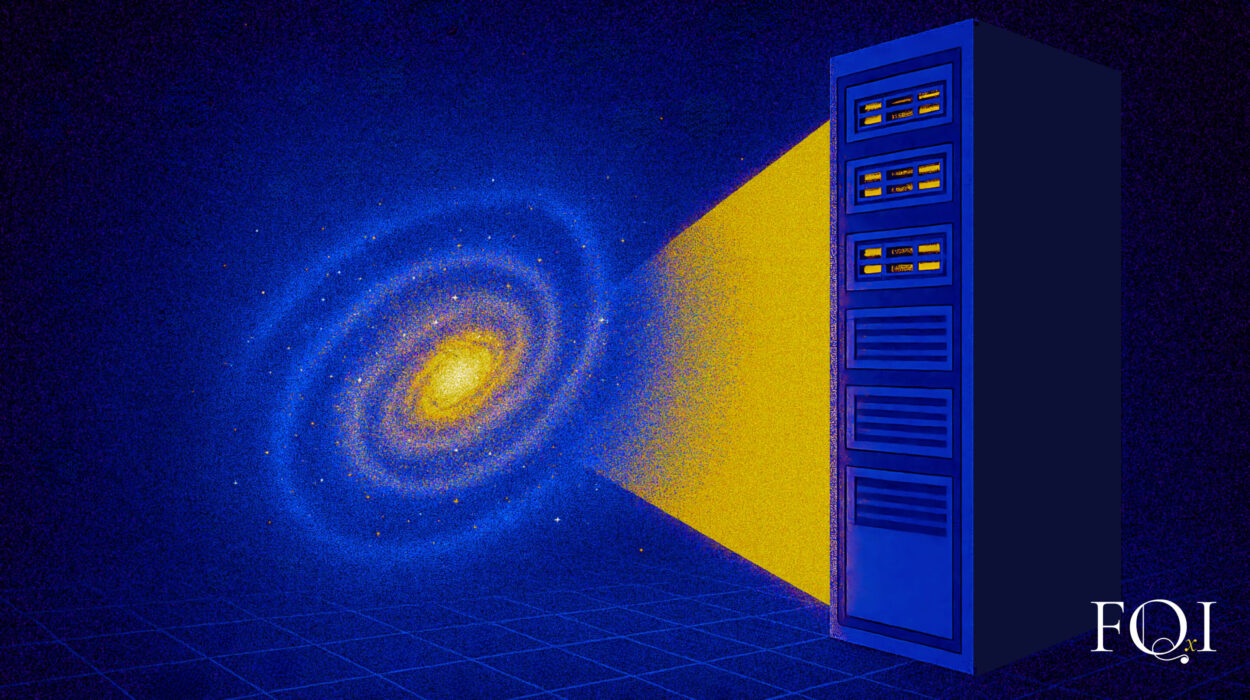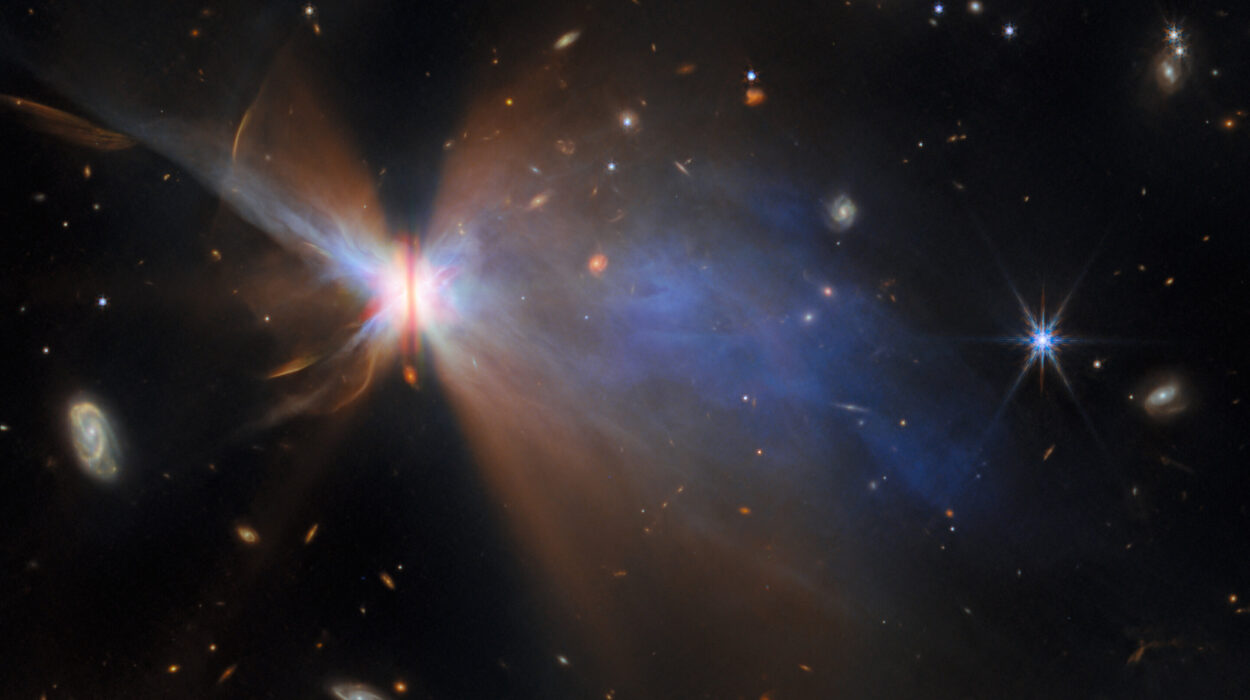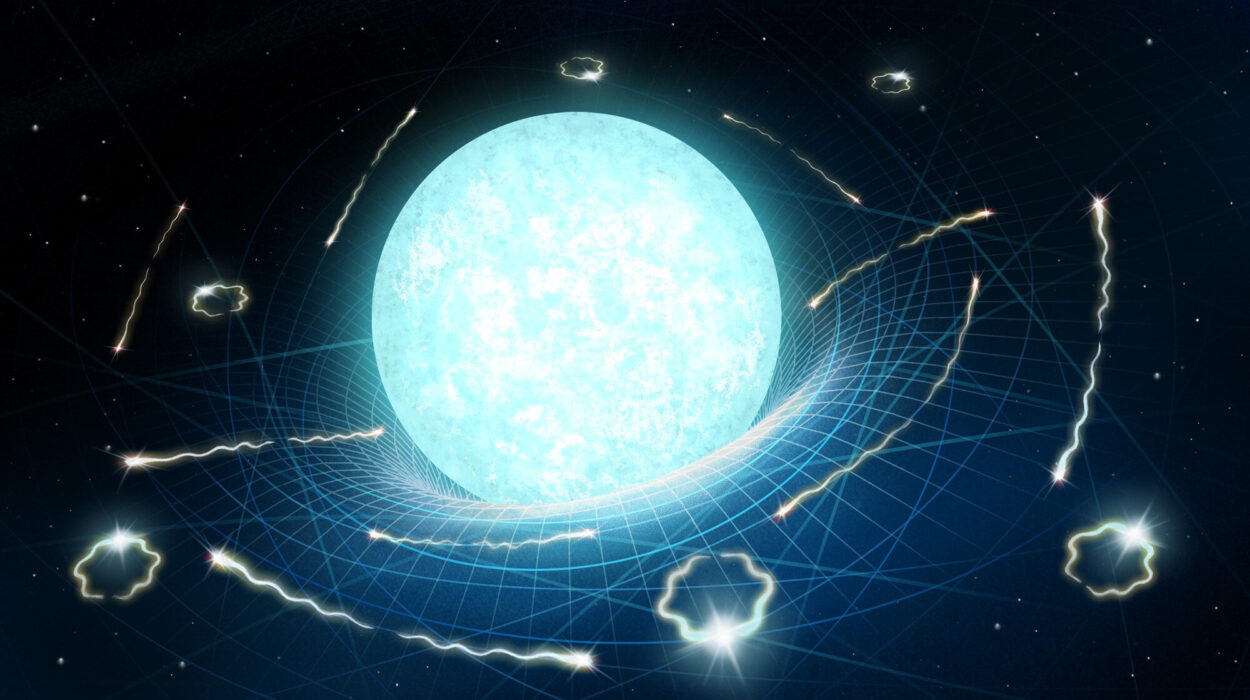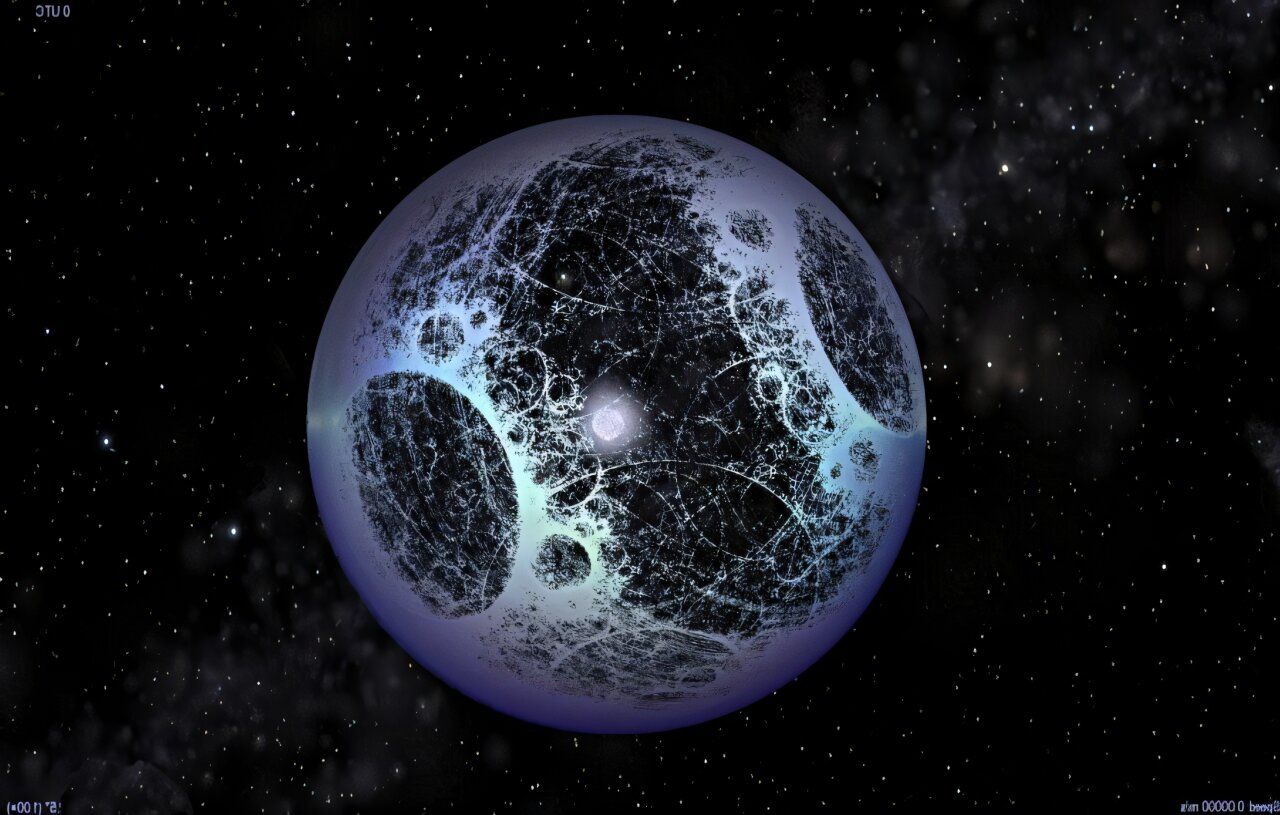Far beyond the twinkling stars and serene darkness of the night sky lies a realm of immense structures and ferocious forces—a cosmic jungle where even the bones can break. Recently, astronomers peering deep into the heart of the Milky Way uncovered what appears to be a celestial fracture in one of the galaxy’s most peculiar and enigmatic features: a massive, thread-like formation known as a galactic “bone.” Using NASA’s Chandra X-ray Observatory alongside cutting-edge radio telescopes, scientists have traced this cosmic wound to an unlikely culprit—a neutron star, a city-sized wrecking ball of pure density, careening through space at mind-bending speeds.
Anatomy of a Galactic Monster
The structure in question is called G359.13142-0.20005, or simply G359.13. To the scientists who study it, it’s affectionately dubbed “the Snake.” Spanning roughly 230 light-years, this sinewy filament coils like a giant interstellar muscle near the crowded, tumultuous center of our galaxy. What makes it extraordinary is not just its size but its nature—these bones, as astronomers call them, are radio-bright threads that trace the magnetic scaffolding of the Milky Way’s core. They glow with the energy of electrons spiraling furiously along magnetic field lines, much like fireflies trapped in a magnetic tornado.
These bizarre and beautiful structures aren’t fully understood. They’re rarely seen and only under very specific circumstances, often lurking in regions cloaked in dust and radiation. Yet the Snake has stood out for decades—remarkable for its brightness, its length, and now, for its injury.
A Break in the Bone
Thanks to a striking combination of X-ray and radio imaging, astronomers have now revealed that G359.13 isn’t as whole as once believed. In images stitched together from the Chandra X-ray Observatory and the MeerKAT radio array in South Africa, the Snake appears to have a distinct break—an abrupt interruption in its otherwise unbroken filamentary flow. This fracture, glowing faintly in X-rays and rippling with distorted radio signals, stands out like a snapped tendon in a cosmic ligament.
What could possibly shatter a 230-light-year-long magnetic structure in the galaxy’s core?
As it turns out, the answer is a bullet—one forged in a stellar supernova, and hurtling through space at up to two million miles per hour.
The Bullet: A Rogue Pulsar
The suspected assailant is a pulsar—an ultra-dense, rapidly spinning remnant of a massive star that exploded long ago. When such stars die in supernova explosions, their cores collapse into neutron stars. These are the densest forms of matter in the universe short of black holes—so compact that a single teaspoon would weigh as much as a mountain.
But these neutron stars don’t always stay put. The explosions that create them often impart a violent kick, launching them away like cannonballs from the dying blast. In this case, astronomers believe a high-speed pulsar—identified through its strong radio and X-ray emissions—smashed headlong into the Snake, carving a fracture through its magnetic backbone.
This hypothesis isn’t just theoretical. At the precise location of the Snake’s fracture, telescopes picked up a powerful source of both radio and X-ray emissions. That’s a telltale signature of a pulsar. The shock of its passage appears to have warped the Snake’s magnetic field, scattering the spiraling electrons and distorting the once-uniform radio waves. X-ray emissions detected by Chandra hint at high-energy particles—electrons and their antimatter twins, positrons—accelerated by the encounter.
It’s a breathtaking idea: a spinning stellar corpse, no larger than a city, barreling across interstellar space, punching through a galactic tendon that had held steady for millions of years.
Unveiling the Galactic Skeleton
The Snake isn’t alone. The center of the Milky Way is laced with similar long, narrow filaments that span tens to hundreds of light-years. These features, first discovered in the 1980s, have remained among the most mysterious structures in the galaxy. Unlike stars or gas clouds, they don’t shine by their own light, but by the motion of relativistic particles—those accelerated to speeds near that of light—caught in magnetic fields.
Their origin is still an open question. Some scientists believe they arise from interactions between molecular clouds and magnetic fields; others suspect ancient black hole outbursts at the galaxy’s center could be involved. The fact that G359.13, one of the brightest and longest of these structures, has now been found to harbor a visible scar gives researchers a rare diagnostic window into how these filaments behave—and what can disturb them.
In essence, the Snake is both a map and a mystery—a living record of galactic forces and cosmic collisions.
A Close Encounter of Galactic Proportions
To grasp the sheer violence of the pulsar’s impact, consider this: at speeds of up to two million miles per hour, the neutron star could travel from the Earth to the Moon in under eight seconds. When it smashed into the Snake, it disrupted a magnetic structure that had likely been stable for eons. The particles flowing along the bone’s field lines were knocked out of alignment, and the structure visibly fractured.
That moment, recorded in radio and X-ray wavelengths, may have occurred thousands of years ago. G359.13 is located some 26,000 light-years from Earth, which means we’re only now seeing the light from that cosmic drama. It’s a kind of time travel—a snapshot of an ancient and invisible battle in the hidden underbelly of our galaxy.
The Bigger Picture: Galactic Weather and Magnetic Forces
Understanding what happened to G359.13 isn’t just about one filament and one rogue neutron star. It’s about mapping the galaxy’s invisible anatomy. Magnetic fields, though invisible, are key players in galactic dynamics. They govern the motion of charged particles, influence star formation, and even shape the structure of spiral galaxies like our own.
These magnetic filaments act like signposts—tracing field lines, pointing toward energetic processes, and occasionally, showing signs of disruption. By studying them, astronomers can infer how matter moves, how stars die, and how extreme events ripple across light-years.
Moreover, these findings may help unlock the secrets of how pulsars interact with their environments. Every pulsar is like a cosmic lighthouse, sweeping beams of radio and X-ray light as it spins. Some of them drag winds of high-energy particles that can carve out cavities, twist magnetic fields, and light up nebulae. G359.13’s fracture offers a rare view into this destructive power.
The Tools of Discovery
This breakthrough was only possible thanks to a suite of modern observatories working in concert. NASA’s Chandra X-ray Observatory provided the high-resolution X-ray data necessary to spot the subtle high-energy signature at the fracture. The MeerKAT radio telescope in South Africa, one of the most sensitive of its kind, delivered a detailed map of the Snake’s radio structure. And the National Science Foundation’s Very Large Array helped confirm the presence of a pulsar at the break point.
Such multi-wavelength astronomy—combining light from across the electromagnetic spectrum—has become a cornerstone of modern astrophysics. Where optical telescopes see stars and galaxies, X-rays reveal shockwaves and magnetic storms, while radio waves expose the invisible architectures of the universe.
A Cosmic Crime Scene
If the Milky Way is a living entity, then G359.13 is one of its vertebrae—and it has just suffered a cosmic dislocation. The wound tells a story of violence and motion, of a universe where even stellar death can lead to chaos thousands of years later and thousands of light-years away.
The research, published in the Monthly Notices of the Royal Astronomical Society, is more than a forensic report on a galactic accident. It’s a vivid reminder of the dynamic, restless nature of our galaxy. Space, far from being an empty void, is alive with structures, forces, and events on scales both awe-inspiring and terrifying.
Reference: F Yusef-Zadeh et al, G359.13142-0.20005: a steep spectrum radio pulsar candidate with an X-ray counterpart running into the Galactic Centre Snake (G359.1-0.2), Monthly Notices of the Royal Astronomical Society (2024). DOI: 10.1093/mnras/stae549.

